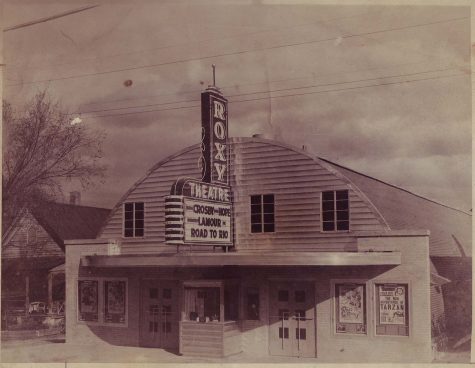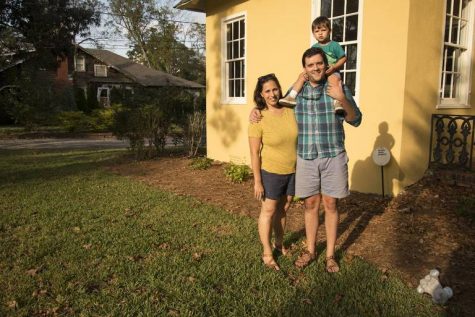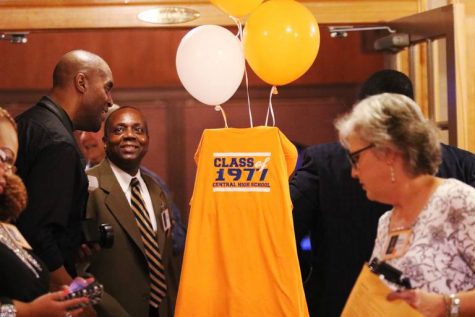Racial concentration on the rise in Bibb schools
Debbie Blankenship and Adam Ragusea|January 13, 2017

* denotes fewer than either 15 male or 15 female students in that racial category at that school
The proportion of white students attending Bibb County public schools has dropped by more than 40 percent over the last 20 years. At the same time, the population of black students has held relatively steady.
When the state released its fall 2016 school enrollment data last month, the Bibb County numbers showed total enrollment of 23,988, with 17,354 of the students identified as black and 4,483 as white. That stands in contrast to 20 years ago, when Bibb’s school enrollment was 24,840, with 16,680 students identified as black and 7,829 as white.
The racial distribution among the schools has also changed. Central High School, for example, had a racial breakdown of 58.5 percent black and 41.4 white in 1996. Today, that number stands at 92.6 percent black and 7.3 percent white.
Of the 4,483 white students enrolled in public schools this fall, more than 1,000 of them were at one school — the Academy for Classical Education, a charter school located in north Macon near the Monroe County border.
While ACE has the largest enrollment of white students in the district, it still has racial diversity that many other Bibb schools don’t. Only two schools — Rutland Middle and Rutland High — reported a racial breakdown that closely mirrored the county’s overall population, according to the latest U.S. Census numbers.
Other key statistics from the Georgia Department of Education’s enrollment data:





Some of the changes in enrollment between 1996 and 2016 can be attributed to broader changes in Macon-Bibb’s population. The overall population of school-age residents has fallen from 29,644 in 1997 to 27,338 in 2015, the most recent year for which census data is available.
The white population in Bibb County has also fallen, but not at the same rate as the decline in public school enrollment. In 2000, Bibb’s white population was 50.1 percent, and that had dropped to 42.9 percent by 2015, according to U.S. Census estimates. The black population was 47.3 percent in 2000 and had increased to an estimated 53.1 percent by 2015.
Part of a national story
The increasing concentration of students of color in Bibb County schools is consistent with national trends, which show that de facto school segregation on the rise.
In a 2016 report, the U.S. Government Accountability Office tried to quantify school segregation nationally by counting the number of public K-12 schools in which at least 75 percent of students are black and/or Hispanic and at least 75 percent are poor enough to qualify for free or reduced price lunches.
According to the GAO’s analysis of data from the Department of Education, 9 percent of public schools nationally in 2000-01 were overwhelmingly poor and black/Hispanic. By 2013-14, the most recent year for which data was available, that number had shot up to 16 percent.
Our analysis of the same DOE data found that 59 percent of Bibb schools were overwhelmingly poor and black/Hispanic in 2000-01 compared to 66 percent in 2013-14. (More recent data cannot be compared because Bibb schools have since started offering free lunches to all students, regardless of income level.)
Nationally, such schools are both separate and unequal, according to the GAO’s analysis. Students attending them had fewer educational opportunities than students in more economically and racially diverse schools, including fewer math, science and college preparatory classes.
Looking to the future, President-elect Donald Trump’s choice for secretary of education, Betsy DeVos, is a leading proponent of “school choice”: public charter schools, vouchers that allow students to attend private schools with public money, and policies allowing students to attend public schools in districts where they don’t live.
Whether school choice policies make schools more or less segregated is a subject of intense debate among education scholars.
In the coming months, we at Mercer University’s Center for Collaborative Journalism — along with our partners, The Telegraph and Georgia Public Broadcasting — will be reporting on school resegregation in Macon-Bibb County. We hope to learn more about why it’s happening and what the effect is on students and the broader community.
As part of our reporting, we’ll be holding a pair of community meetings, where we hope people with a stake in the county’s K-12 education will attend and tell us their stories.
In particular, we’re hoping that parents will answer these basic questions:
Where do you send your children to school and why?
Do you like the options you have? Why or why not?
How important is it to you that your children attend racially and economically diverse schools?
The meetings will be held from 6-8 p.m. Jan. 24 in the Buck Melton Center, 150 Sessions Drive, and 6-8 p.m. Jan. 26 at the Museum of Arts and Sciences, 4182 Forsyth Road. Pizza, cookies and drinks will be available at both meetings, along with supervised activities for children.





